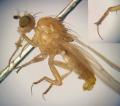Diptera.info :: Identification queries :: Diptera (eggs, larvae, pupae)
Page 1 of 2: 12
|
|
Candidate Thaumaleidae larva, NE HU, August
|
|
| pwalter |
Posted on 15-08-2009 22:22
|
|
Member Location: Miskolc, Hungary Posts: 3555 Joined: 06.11.08 |
Hi, recently I read here that Thaumaleid larva are to be found on vertical walls with slow water flowing down. I visited a stream in a forest area in the mountains, in Aggtelek NP, and found a moss-covered wall of stone where stream water was coming down. I collected some 5x3 cms of moss, and at home I found this nice nematoceran larva. Some 14 mm long. Looks like Limoniidae a bit. Maybe, could it be a Thaumaleid? It has huge hooks (one pair) at posterior end. See first photo, left side. The photos had to be made with a little compact, as my camera broke down at the beginning of my trip. I'm devastated because this... pwalter attached the following image: 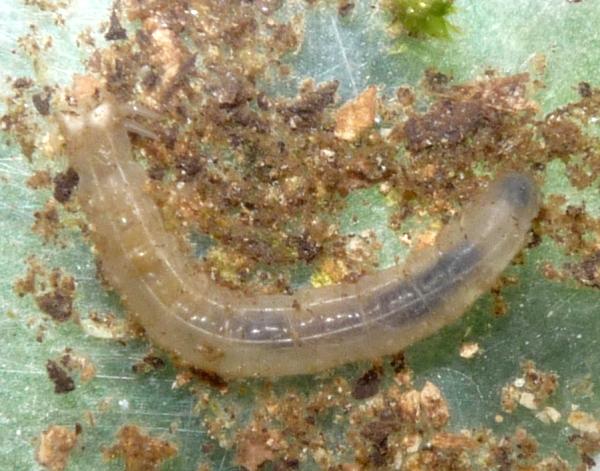 [64.56Kb] Edited by pwalter on 15-08-2009 22:22 |
|
|
|
| pwalter |
Posted on 15-08-2009 22:23
|
|
Member Location: Miskolc, Hungary Posts: 3555 Joined: 06.11.08 |
2
pwalter attached the following image: 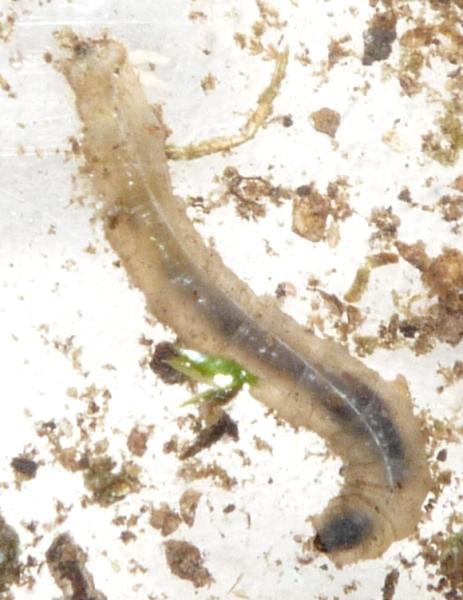 [51.42Kb] |
|
|
|
| John Bratton |
Posted on 16-08-2009 18:39
|
|
Member Location: Menai Bridge, North Wales, UK Posts: 654 Joined: 17.10.06 |
No, this looks more like a cranefly than a Thaumalea. The latter are more the shape of chironomids - thinner and less fleshy. They scurry across the rock surface quite quickly. John |
|
|
|
| atylotus |
Posted on 17-08-2009 10:59
|
|
Member Location: Amsterdam, NL Posts: 1172 Joined: 29.05.09 |
This is definitely a Tipulidae larvae, for it has a fully developed retractable head-capsule and 6 terminal stigmatal lobes. Besides this it has anal lobes at the ventral side of the anal-segment. Which species I can't tell. A thaumaleid larva (see picture) or any other family (exept Pediciidae) has the head capsule reduced and is in the thoracic segements or is fully developed and not retractable. Pediciidae has a complete and retractable head capsule, but the aquatic stages have two ventral stigmatal lobes only.
atylotus attached the following image:  [13.79Kb] Edited by atylotus on 17-08-2009 11:53 |
|
|
|
| pwalter |
Posted on 17-08-2009 12:13
|
|
Member Location: Miskolc, Hungary Posts: 3555 Joined: 06.11.08 |
Hi, thanks for all the infos. Atyílotus, can You tell me where this was photographed? in what habitat, and in wht time of the year? And where should I look for Pediciidae larvae? Can You submit this thaumaleid larva to the gallery? It would be nice to have this family also. |
|
|
|
| marprisp |
Posted on 17-08-2009 12:43
|
|
Member Location: Posts: 8 Joined: 11.08.09 |
Hello everyone!! We have always problems in identifying Thaumaleidae larvae. The problem is that in our sampling points the number of chironomids is so high that it is practicable impossible to see all the heads. Is there really a visual difference between Chironomidae and Thaumaleidae?Are Thaumaleidae larvae frequent in Spain (or Europe)? Thanks a lot in advance |
|
|
|
| atylotus |
Posted on 17-08-2009 13:21
|
|
Member Location: Amsterdam, NL Posts: 1172 Joined: 29.05.09 |
This larva of Thaumaleidae was photographed from a springbrook in the hilly (sandy) part in the centre of The Netherlands (Duno Fonteinalle, Heveadorp, Gelderland, The Netherlands) on 18 sept. 2006. As only Thamaulea testacea has been recorded as an adult in The Netherlands this must also be the larva of Th. testacea. It can readily be identified from Chironomids by the hypognathous head, the presence of prothoracic spiracles, an unpaired proleg armed with a series of curved sclerotized hooks, but most of all, abdominal segment 8 has a pair of stigmata flnked by a pair of finger-shaped processes. I believe that in southern Europe you have more than one genus. Thaumaleidae are characteristic inhabitants of the hygropetric zones in springs, streams and small rivers. In the Netherlands the species (family) is rare, but it becomes more common in Germany and yet more in the south and east. Wagner in Nillson (1997) says that in the Alps there are more than 40 species! I know nothing about the adults. Pediciidae are typical inhabitants of brooks. Dicranota is (in The Netherlands) the most encountered genus in brooks and small rivers. Dicranota has paired prolegs with hooks on the ventral side of segment 3-8. Pedicia larvae are mostly encountered along the banks of streams in rotten wood, coarse organic material or underneath leaves . Pedicia is very large larvae, resembling Tipulidae. Tricyphona is rare in The Netherlands, and I have only found this genus once in a small stream. But Brindle (1967) has found Tricyphona also in moorland pools with Sphagnum (most likely another species than mine). atylotus attached the following image: 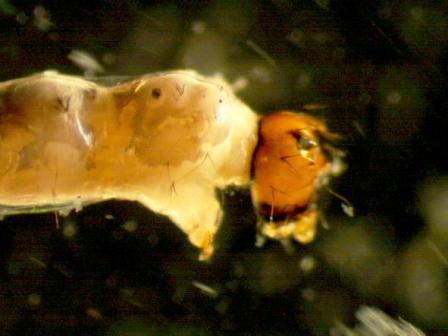 [19.52Kb] Edited by atylotus on 17-08-2009 13:50 |
|
|
|
| atylotus |
Posted on 17-08-2009 13:30
|
|
Member Location: Amsterdam, NL Posts: 1172 Joined: 29.05.09 |
hindbody laterally
atylotus attached the following image:  [13.46Kb] Edited by atylotus on 17-08-2009 13:31 |
|
|
|
| atylotus |
Posted on 17-08-2009 13:32
|
|
Member Location: Amsterdam, NL Posts: 1172 Joined: 29.05.09 |
frontbody ventrally
atylotus attached the following image: 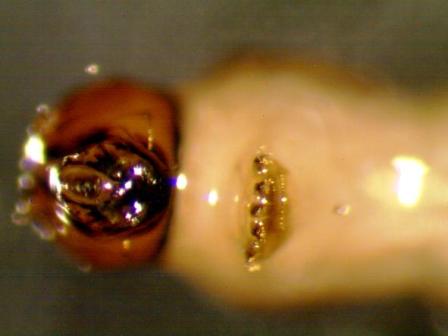 [13.41Kb] Edited by atylotus on 17-08-2009 13:34 |
|
|
|
| phil withers |
Posted on 17-08-2009 22:04
|
|
Member Location: Lyon, France Posts: 521 Joined: 04.03.08 |
Thaumaleids are a dominant feature of calcareous trickles in the Alps: because of their poor powers of dispersal, many species are highly localised (I know of one that occurs only on one rock face in the Chartreuse Alps). And we do have more than one genus... |
|
|
|
| Paul Beuk |
Posted on 18-08-2009 07:12
|
|
Super Administrator Location: Netherlands Posts: 19403 Joined: 11.05.04 |
Ton, I think I saw an adult specimen once that I could not confirm as T. testacea and it might even have been from the same locality. I just cannot recall where I saw that specimen... 
Paul - - - - Paul Beuk on https://diptera.info |
| marprisp |
Posted on 18-08-2009 10:22
|
|
Member Location: Posts: 8 Joined: 11.08.09 |
Thank you very much for all the info. Looking carefuly at the pictures I think I can say that we have never seen yet any representative of the family Thaumaleidae. However, I will look closely from now on. It is strange that in more than 270 sites sampled all around spain (both calcareous and siliceous) we have never recorded Thaumaleidae....If you have any specific information about the iberian peninsula or mediterranean climates or if you know where to find it please tell me. THANK YOU SO MUCH AGAIN!!!!! |
|
|
|
| marprisp |
Posted on 20-08-2009 12:25
|
|
Member Location: Posts: 8 Joined: 11.08.09 |
Is this a Thaumaleidae???
marprisp attached the following image:  [9.09Kb] Edited by marprisp on 20-08-2009 12:35 |
|
|
|
| marprisp |
Posted on 20-08-2009 12:37
|
|
Member Location: Posts: 8 Joined: 11.08.09 |
now head
marprisp attached the following image: 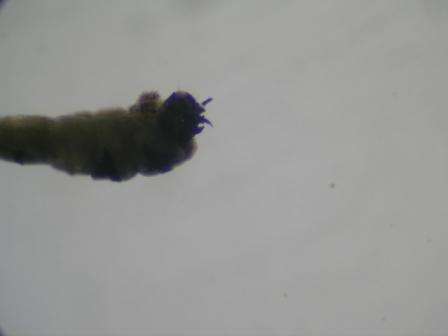 [6.84Kb] |
|
|
|
| atylotus |
Posted on 20-08-2009 13:19
|
|
Member Location: Amsterdam, NL Posts: 1172 Joined: 29.05.09 |
I don't think it is a Thaumaleidae. It shows more resemblance with a Boreoheptagyia [Chironomidae : Diamesinae]. The pictures are very poor though. This peculariar larva also has dorsal tubercles on the head. I have never seen this genus in real, but according to Oliver in Wiederholm (1983 : p116) the larva has a "body patterned with multipointed spines or coarse bars. Claws on parapods arranged in circle." and "The antenna are also on a short pedestal, the anterior parapods are fused, apically divided into two lobes, with each lobe bearing circle of claws". The larva of Boreoheptagea are found in cool, clear mountain or glacier-fed streams, clinging to rocks and boulders at the splash-line.
Edited by atylotus on 20-08-2009 13:21 |
|
|
|
| marprisp |
Posted on 20-08-2009 13:44
|
|
Member Location: Posts: 8 Joined: 11.08.09 |
Thank you very much!What a deception...Is this picture better than the last one?I'm afraid that our camera is not good enough for such a small individual.
marprisp attached the following image: 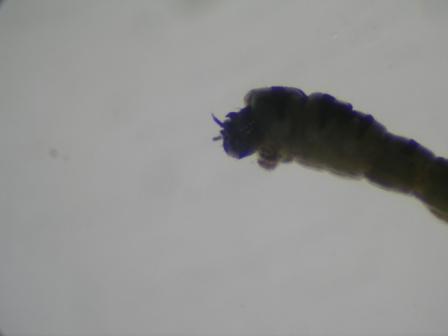 [7.2Kb] |
|
|
|
| marprisp |
Posted on 20-08-2009 13:44
|
|
Member Location: Posts: 8 Joined: 11.08.09 |
maybe not....
marprisp attached the following image: 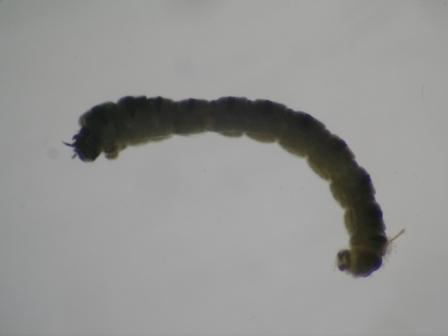 [7.85Kb] |
|
|
|
| pwalter |
Posted on 20-08-2009 14:27
|
|
Member Location: Miskolc, Hungary Posts: 3555 Joined: 06.11.08 |
It would be nice to have a Diamesinae Chironomid in the gallery, when id can be confirmed! |
|
|
|
| atylotus |
Posted on 20-08-2009 14:42
|
|
Member Location: Amsterdam, NL Posts: 1172 Joined: 29.05.09 |
I would gladly have a look at this specimen. if it's really a Boreoheptagyia then I would be very pleased. If you like you can send it to me, and after a verification I will return it you, offcourse after taking some photographs. Click on my name and you'll find my e-mail adress. If you send me an e-mail then I will answer it with my postal adress. If you like you can have a look at our Thaumaleidae, but I will like to have this back in due time. |
|
|
|
| atylotus |
Posted on 27-08-2009 09:37
|
|
Member Location: Amsterdam, NL Posts: 1172 Joined: 29.05.09 |
I received the specimen and it is definitely a Boreoheptagyia larva. According to Fauna Iberica There should be only one species in Spain: B. legeri, so it may well be the larvae of this species. Very typical are the dorsal tubercles on the head, the circular arranged claws on the posterior parapods and the brownish pattern of small spines on the body. I have added some pictures to give you an idea. Best wishes Ton atylotus attached the following image: 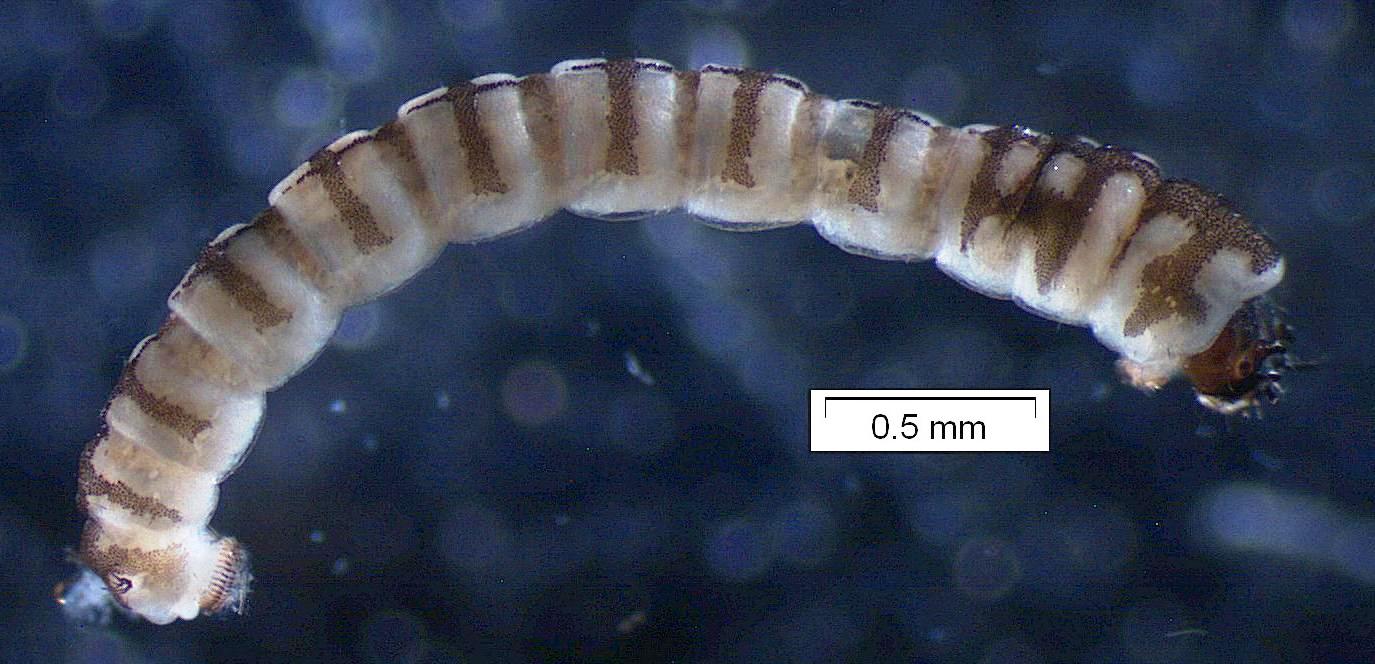 [124.16Kb] |
|
|
|
Page 1 of 2: 12
| Jump to Forum: |



